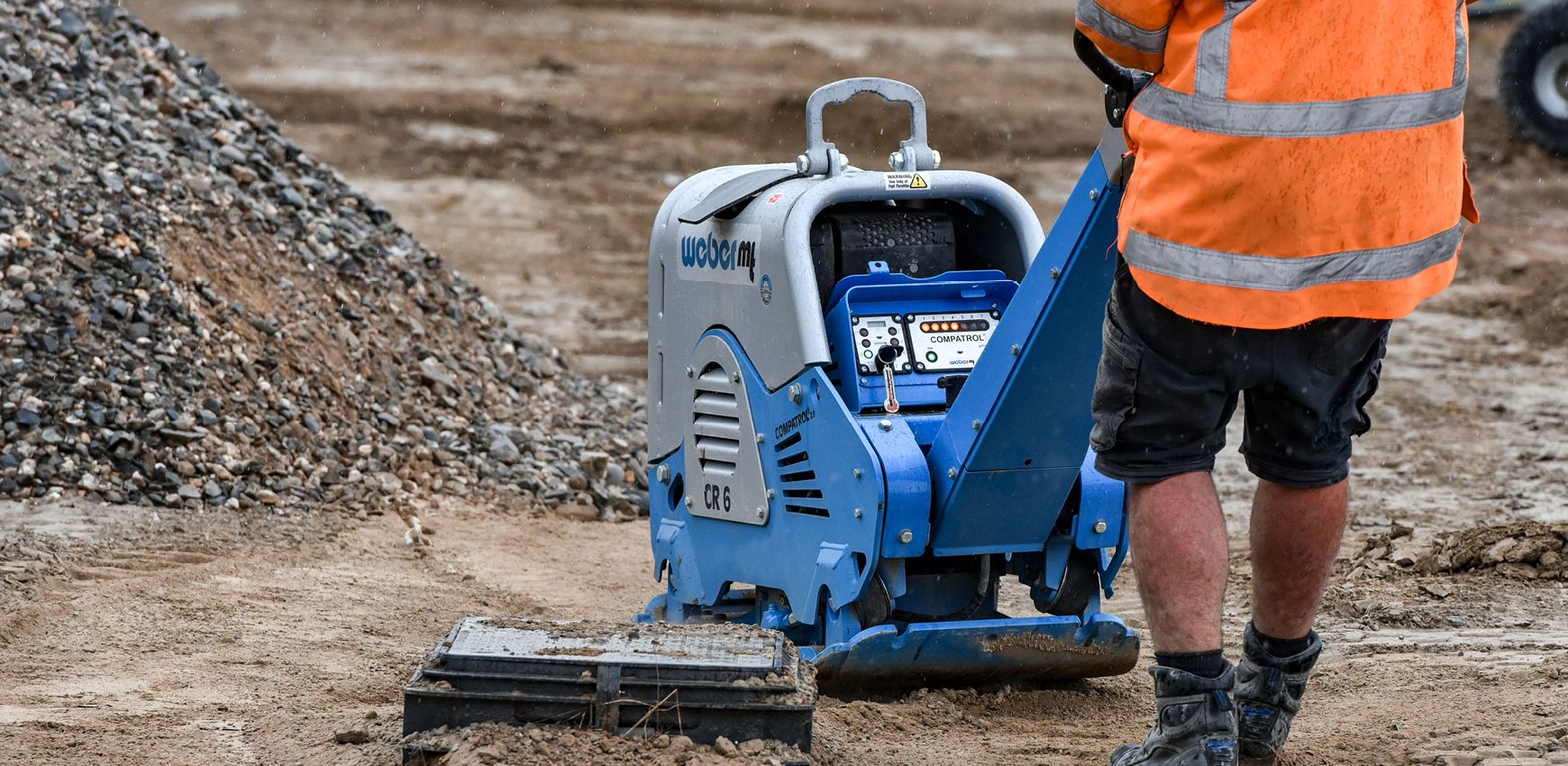A Comprehensive Guide to Plate Compactors

Compactors are crucial on construction and landscaping sites. They help make surfaces strong and durable, whether you're laying down patios, working on driveways, or doing landscaping projects. But not all plate compactors are equal and with so many different models out there, it’s important to make sure you get the right one for the job.
In this guide, we'll be breaking down the different types of plate compactors and what things you’ll need to consider when choosing which one you need.
WHAT ARE THE MAIN TYPES OF PLATE COMPACTORS?
1. Single Direction Plate Compactors
Simple but useful, a single direction plate compactor is great for simple jobs like hard fill, making paver paths, and smoothing out asphalt. As the name suggests, they only move in one direction, but they are much smaller and lighter than reversible compactors, making them easier to transport and use.
Landscapers, builders, and civil contractors all love this compact option for getting small to medium jobs done efficiently.
2. Reversible Plate Compactors
A reversible plate compactor moves both forwards and backwards making it better for larger jobs or tight spaces. They are also usually bigger and more powerful than single direction compactors for tough jobs like roadworks and large civil sites. Due to their size, some reversible plate compactors will need specialist equipment to help with transport, but for roading contractors or those doing plenty of foundation projects, it’s well worth it.
3. Specialty Compactors
a. Asphalt Plate Compactor:
Plate compactors are used regularly on construction and paving sites, and they can be used to compact asphalt as well as the ground, but a standard compactor is likely to have the asphalt stick to it. An asphalt specific plate compactor is designed with different materials to prevent sticking and usually comes with a water tank and sprinkler system, making it ideal for regular paving projects. The Weber MT CF 2 A is a great example of a plate compactor designed specifically for use on asphalt.
b. Trench Rammer/Vibrating Compactor:
A trench rammer or vibrating compactor is a smaller, more precise compactor used for creating channels or trenches. They pack a powerful punch, especially the big SRX 750 D. For smaller jobs, the SRV 300 Tamper is light but gets the job done. But keep in mind, trench rammers won’t cut it for larger areas.
THINGS TO CONSIDER IN A PLATE COMPACTOR
Handle design
Handles play a big role in how easy and comfortable the machine is to use. The vibration of a plate compactor is generally transferred through the handles to the operator and depending on the type of handle, it can be pretty uncomfortable.
Some plate compactors have a basic bar at the back, similar to a push-mower, but centrally mounted or swing handles are more effective at absorbing vibration and make for easier movement. Swing handles can also be mounted at the back of the machine to allow for greater manoeuvrability and operator comfort. The Weber MT range has some of the lowest vibration and most comfortable handles on the market.
Width, weight, force, and VPM
Choosing the right compactor based on the physical size of the plate is obvious – wider plates cover more ground in one pass. But the centrifugal force it puts out also needs to be considered. Not enough and you won’t be able to do the job; too much and you’ll destroy the work that’s already been done.
And don’t forget to consider how heavy the machine itself is and the number of vibrations per minute (VPM). For asphalt and granular materials, you’ll need a higher VPM, while for more cohesive soil compaction, a lower VPM is better.
Plate construction
What is the plate itself made of? Cast ductile iron base plates tend to be more efficient because they’re more rigid. Some plates are also curved, making them easier to turn and less likely to gouge the surface while you work. Weber MT models also have self-cleaning base plates, for less wear and tear from material build-up around and underneath the plate.
GET THE RIGHT PLATE COMPACTOR FOR THE JOB
Landscaping & minor asphalting
For almost all smaller jobs, a single direction plate compactor is the right choice.
They’re available with either 2.7 or 2.8 HP engine size depending on the size of the plate itself and the manoeuvrability you need. Water sprinkler systems are also available as an added option for use over asphalt, gravel or sand for greater compaction.
If you regularly work in tighter spaces where you may not be able to turn a single direction compactor, a reversible plate compactor might be a better choice.
Trenching and road repairs
When you need more force to make channels or trenches for heavier groundworks, a trench rammer is the way to go. All three Weber MT SRV models boast over 18kN of strike force, the only big difference being the SRV 620, which is heavier and compacts at a whopping 20.9kN.
Our largest trench rammer, the SRX 750 D is great if a heavyweight diesel option makes more sense for your business. For smaller packing or tamping jobs, the SRV 300 Tamper is a versatile option that can be used horizontally and vertically and only weighs 32kg.
Commercial roadworks and landscaping
For gravel and asphalt compaction on large commercial projects, a reversible plate compactor is the way to go. Our range of reversible plate compactors includes plenty of sizes that cater to the size of the job at hand, from the CR 1 HD with 15 kN of compaction, all the way up to CR 9 CCD 2.0 with a whopping 100 kN of compaction.
Now that you know more about what you’re looking for in a plate compactor, you can take a closer look at the different models of plate compactors we have available or give our experienced team a call. We’ll help you find the plate compactor that’s best for your needs.